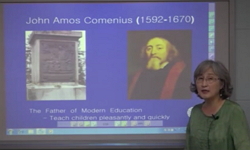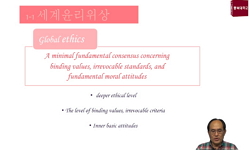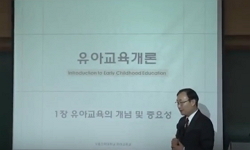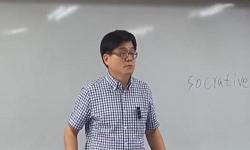This article presents Choi Han-ki's educational thought found in his own Ch'ihak(氣學). Choi Han-ki(崔漢綺) established a system of Ch'ihak, which followed the traditional theory of Jukiron(主氣論), as well as being strongly affected by Bukhak...
http://chineseinput.net/에서 pinyin(병음)방식으로 중국어를 변환할 수 있습니다.
변환된 중국어를 복사하여 사용하시면 됩니다.
- 中文 을 입력하시려면 zhongwen을 입력하시고 space를누르시면됩니다.
- 北京 을 입력하시려면 beijing을 입력하시고 space를 누르시면 됩니다.
https://www.riss.kr/link?id=T9932071
- 저자
-
발행사항
부산 : 慶星大學校 敎育大學院, 1998
-
학위논문사항
학위논문(석사)-- 경성대학교 교육대학원: 역사교육전공 1998. 8
-
발행연도
1998
-
작성언어
한국어
- 주제어
-
KDC
370.1 판사항(4)
-
발행국(도시)
부산
-
형태사항
53p. ; 26cm.
-
일반주기명
참고문헌: p. 47-50
- 소장기관
-
0
상세조회 -
0
다운로드
부가정보
다국어 초록 (Multilingual Abstract)
This article presents Choi Han-ki's educational thought found in his own Ch'ihak(氣學). Choi Han-ki(崔漢綺) established a system of Ch'ihak, which followed the traditional theory of Jukiron(主氣論), as well as being strongly affected by Bukhak(北學), one branch of Silhak (實學), Incidentally, Silhak was a new ideology at that time implying positivism. Since his Ch'ihak was based on western objective and scientific thinking those days, he endeavored to make a new ideological change in both the tradition of Jukiron and the thought of Silhak.
According to his theory, Ch'i(氣) was the ontological fundamental conception of all the philosophical speculation, but it was not so dualistic or so metaphysical as in the previous theory of Jukiron. His Ch'i as a substantial entity was not only the origin of the universe but also an unceasingly moving existence. Thus, his Ch'ihak was quantitative and measurable. And to expand Ch'ihak to social activities of humans as well as the theory of the universe, he took up the life-style of the general public in the social and economic situation.
In addition, he accepted not only western scientific knowledge accumulated from the Renaissance but also the achievements of contemporary science introduced by western missionaries of the 19th century. In that point, Choi Han-ki's unique Silhak was 'that of science' based on Yuksanmuli(曆算物理), while the former theory of Silhak had been 'that of Chinese classics' based on the deduction of the Confucius scriptures.
Choi Han-ki(崔漢綺) presented the necessities and possibilities of educating humans on the basis of his own empirical epistemology. According to him opinion, the ultimate object of education was focused on the improvement of human life in the light of society. Drawing up educational curriculums, he attached a lot of importance to daily practical or pragmatic life along with ethical education on humanity(人道). He regarded all the tasks of everyday life as educational activities. As a result, he placed great importance on pragmatic education (for example, official work, agriculture, industry, business) and scientific-technological education (for example, mathematics). He also paid attention to the education of early period by proposing to create educational environment from childhood. Though his philosophical basis was somewhat different from that of other philosophers in Silhak, the essence of his educational ideology was similar to those of others.
Furthermore, his clear and concrete learning theory was based on his unique epistemology. An emphasis was laid on the importance of individual learning according to learners' abilities, hierarchical learning in stages, and learner-centered self-study. Thus, his empirical education theory of this kind seems to be quite suggestive of the operation of modern education.
목차 (Table of Contents)
- 목차
- 1. 머리말 = 1
- 2. 崔漢綺 철학 형성의 역사적 제 조건 = 6
- 1) 상업 발달과 北學 思想의 형성 = 6
- 2) 서양 근대 과학 지식의 수용 = 11
- 목차
- 1. 머리말 = 1
- 2. 崔漢綺 철학 형성의 역사적 제 조건 = 6
- 1) 상업 발달과 北學 思想의 형성 = 6
- 2) 서양 근대 과학 지식의 수용 = 11
- 3. 崔漢綺 교육 사상의 철학적 기초 = 17
- 4. 崔漢綺의 교육 사상 = 25
- 1) 교육 목적 = 25
- 2) 교육 내용 및 구성 윈리 = 29
- 3) 교육 방법 = 34
- 5. 맺음말 = 44
- 參考文獻 = 47
- Abstract = 51












